Is the VR market developing in line with expectations, or has uptake of the technology stalled? Analysts share their views.
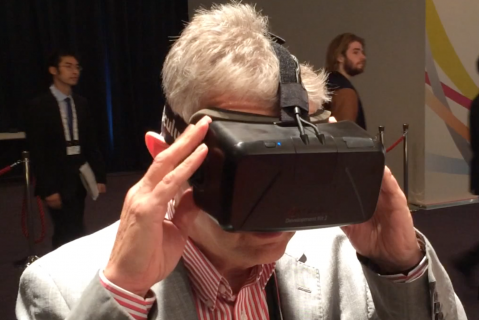
Towards the end of last year, Nokia announced its intention to cut its investments in virtual reality (VR), with further development of the Ozo VR camera halted.
At the time of the announcement, Nokia said: “In digital media, the slower-than-expected development of the VR market means that Nokia Technologies plans to reduce investments and focus more on technology licensing opportunities.”
With a high profile product like Ozo being nipped in the bud, questions are now being asked about what the future for the VR market looks like. Has it peaked?
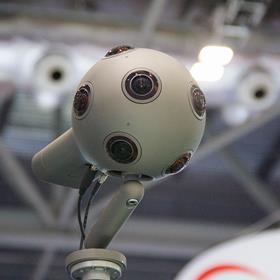
Analysts do not seem to be phased by take up in the VR market, which they say, contrary to Nokai’s statement, has not been slower than expected.
Says Gfk Director of Technology Imran Choudhary: “When looking at the take up of VR devices, the market has seen solid growth [in 2017].
“Whilst still in its infancy, there’s no doubt this is a growing category. Consumers and some analysts might have expected a faster rate of up take, but when you consider the players who have been selling VR devices to date and the price points in question, the growth we’ve seen is pretty much where one would expect it to be.
“Our research revealed that in the UK, 50% of the population found the idea of owning a VR device fairly or very appealing. It’s perhaps because of these high interest levels, there’s been a higher than usual expectation on this category to perform from some quarters of the industry.”

Evaluating expectations
ABI Research Principal Analyst Michael Inouye says that when 2018 VR forecasts are taken into consideration the VR market has performed better than anticipated, “both in the early and current years and its potential trajectory. If we, however, consider expectations at different points in time then I would say near term projections have softened a bit and the forecast has shifted out”.
Based on the last report ABI Research has lowered 2017 expectations for the VR market to somewhere around 18 million to 19 million units against its previous expectation of closer to 20 million (note that this does include the mobile VR HMDs or smartphone holders, and this accounts for the highest level of variability, particularly in markets like China which have greater platform fragmentation).
Read more VR broadcasting: Still a long way to go?
Inouye says: “Overall though, I think 2017 largely met our expectations; there was a period when I thought we would be too high but the price cuts (to HMDs) have certainly helped move units. The entrance of new competitors (namely Windows MR devices – tethered VR) also affords consumers more choices, although the expected price differential that we had thought would come with these devices didn’t materialise since Oculus, Vive, and PSVR all had price cuts.
“On the mobile VR side, I was a bit surprised Google didn’t do more with year two Daydream. Samsung also shifted some of its promotional activity from Gear VR to its 360 camera (Gear 360), but overall this segment of the market developed largely as expected.
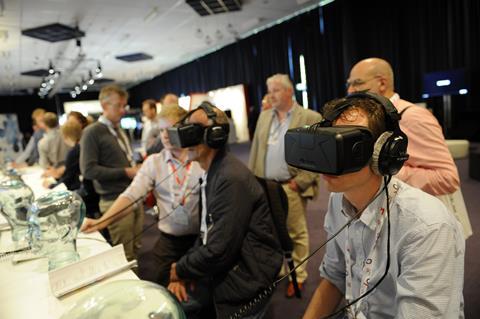
“From the time of our initial forecast to today the general excitement surrounding the industry has grown tremendously and more recently tapered off, particularly within the media. I believe a great deal of that is tied more directly to the gaming market which hasn’t developed quite as I had expected, and based on some of the growing concerns I would assume others as well.”
“When will we hit a strong inflection point and how big will that be?” - Michael Inouye
Inouye notes that there has not been a cavalcade of AAA game titles announced for VR; while ABI Research did not expect many titles shipping at this point, overall investment into VR does not appear to be as strong as the research firm had surmised.
He adds: “First and foremost I think some had unrealistic expectations of what VR could do today and perhaps they didn’t adequately account for the high price of entry; ABI Research has always held a longer-term view with VR. The main question remains when will we hit a strong inflection point and how big will that be? On that front we’ve shifted our forecasts more and lately we are pushing things a bit further out.”
Reality “settling in”
Inouye continues: “For those who feel the market has failed to gain traction or has developed considerably slower than expected I think in those instances it’s more of a case of actual reality settling in, meaning expectations were probably too high for a nascent technology that like most entered the market at a premium price and early gen tech issues. I also think some thought the uptake could follow something like Microsoft’s Kinect which had rapid adoption, but if anything, I think that product has put a damper on something like that happening again for some time.”
“Concerns from consumers have been around price and privacy as well as a lack of understanding” - Imran Choudhary

On the change to original expectations for VR take up, Choudhary comments: “As there has been relatively high levels of awareness and interest in owning VR devices from consumers, there was perhaps an expectation this category would perform ahead of other ‘new to market’ categories.
“Whilst no one can deny there has been growth, what may have hindered an even faster take up of VR devices has been the relatively limited number of players selling VR devices and the price points in question.
“Adding to this, our research revealed there are concerns from consumers that the industry needs to overcome before these devices go mass market,” continues Choudhary.
“Most of the concerns from consumers have been around price and privacy as well as a lack of understanding as many feel the idea of using a VR device whilst appealing, is somewhat tricky to execute, especially when many of the devices require a games console or a powerful computer to work with the VR unit. As things stand, it’s only the early adopters and leading-edge consumers who are buying VR devices, and the industry needs to move beyond this niche group to really succeed.”
Quality over quantity
Strategy Analytics Executive Director for Apps and Media David MacQueen says his organisation hasn’t “heavily” adjusted its forecasts.
“The VR hardware market has shifted from quantity to quality faster than anticipated” - David MacQueen
“But certainly, the major change has been a decrease in the volume of headsets sold. However, the average value of those headsets is higher, so the revenue picture for hardware hasn’t really changed that much. It’s important to understand what’s driving that.
”The low-cost VR headsets, in particular Google Cardboard, have really taken a tumble recently. The promotional activity from major brands such as McDonald’s and New York Times that we saw in 2016 has largely evaporated.
Strategy Analytics is expecting shipments to grow steadily year-on-year, but since the growth is coming more from higher quality headsets, average selling prices are greater, so it is expecting a greater increase in hardware revenues, rising from $2 billion to $3.3 billion.
“So, Cardboard’s role as an ultra low-cost VR headset, suitable for marketing and promotions, just isn’t really filling a need any more,” says MacQueen.

“There are many different reasons given for this activity ceasing: low quality of experience, uncomfortable design, the cost of creating content impacting ROI are all reasons I’ve heard. That said, Cardboard clearly did help seed the market, and what we’ve seen in our research is consumers shifting to purchase higher quality VR headsets.
“We’re also seeing very high levels of satisfaction with the higher end headsets. Overall, the VR hardware market has shifted from quantity to quality faster than anticipated.”
Chicken and egg
The shift in the market from quantity to quality has important ramifications for the content industry, says MacQueen.
“On the one hand, higher than expected sales of the better-quality VR headsets gives them a better opportunity to showcase innovative content on higher quality hardware with better screens and input mechanisms. But, it also means that the potential audience is smaller, meaning that as of today, the audience isn’t really there to support an ongoing revenue stream. So, for video content in particular, it remains largely experimental and promotional.
“That said,” he continues, “there are a lot of interesting experiments.
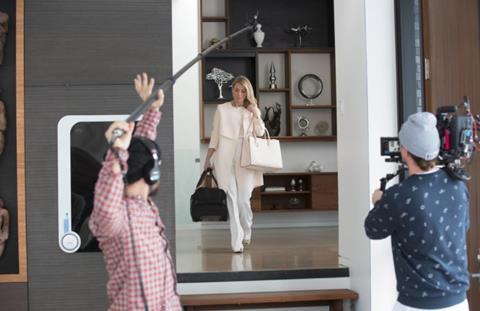
SyFy’s Halcyon series had multiple episodes in VR (rather than promotional ‘one-offs’ such as those for Mr Robot or Stranger Things). There’s a lot of stuff going on around sports as well and that could be an area where a dedicated fan base could lead to a meaningful revenue stream.
“Gaming is one consumer market where things are a bit different and there is a large enough user base to really support the ongoing development of quality titles,” continues MacQueen.
He says distribution platform Steam has helped to push this, and Sony had a bit of an unexpected hit on its hands with the PS VR, which exceed Strategy Analytics and Sony’s sales expectations.
“There are a few AAA titles available already or over the holiday season: Resident Evil, Doom, Fallout. Outside of the consumer space, in enterprise, we are seeing some limited take up of VR, mainly for training purposes (including some big names, such as Walmart,) but for most enterprise use cases, AR is a more relevant technology. Overall, it’s quite a mixed bag, but gaming and sports are certainly on a positive trajectory. These high value but niche segments reflect how the VR market is developing overall.”
Choudhary believes there’s more work to be done here. He says that Gfk’s research revealed that consumers see multiple use cases for VR devices, ranging from gaming and watching video content, to even shopping in a VR environment for everyday items. “So far the reality is not living up to these possible use cases,” he notes.
“As developers, broadcasters and brands develop further in this area, it will create more momentum behind the driving use cases and make VR devices a more appealing proposition for consumers.”
VR in 2018
CCS Insight states that shipments of VR headsets will rise more than fivefold between 2017 and 2021. Driven primarily by demand for smartphone-based experiences, global shipments of VR devices will grow from 16 million in 2017 to almost 91 million in 2021.
”With increased competition comes more competitive pricing architecture, which is good for consumers” - Imran Choudhary
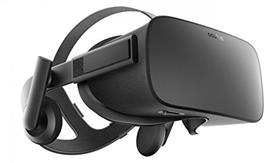
Sales of dedicated VR headsets like the Oculus Rift and HTC Vive will rocket tenfold over the same period, but they will form a small proportion of the market owing to their greater cost and the need for a separate computing device.
CCS Insight Vice President of Multiplay and Media Paolo Pescatore says: “VR appears to have stalled, but there is interest in mixed reality and augmented reality. It is still early days for these technologies and they will need significant investment, but they offer scope for content owners to be very creative.
”Media owners are interested in better understanding the value of producing content natively in VR and 360-degree formats. However, there remain significant costs in content creation, production, editing and distribution in these formats.”

Pescatore adds: “The fundamental challenge is how the media industry can make money from VR; the business models remain unclear and unproven. In addition, consumers still want watching shows or events to be a social experience, which is challenging with a VR headset.”
ABI Research expects continued growth in VR. A big factor, says Inouye, will be the development of the standalone VR market.
“There are a number of announced and expected devices for 2018 including: Daydream devices, HTC HMD(s), and Oculus HMD(s).
“This facet of the market has already changed from my initial expectations. I had originally though standalone VR would largely support 6DOF movement but now we know there will be a mix (3DOF and 6DOF). This likely impacts the longer terms development market more than the here and now, namely slowing down the technical progression of the VR devices than broader adoption, but it does suggest the lower pricing tiers will continue to remain a less immersive experience than the premium ones.”
Concluding, Choudhary is confident that VR will do well this year.
“As more content arrives from a gaming perspective and as prices drop, it means these devices become more affordable to more consumers.
“With the expectation that some of the traditional IT manufacturers are looking to move into this sector, this could be the year we see VR take a leap in the right direction. New models that are likely to arrive in 2018 will be more varied in terms of spec and features and are likely to opt for an ‘untethered’ approach which negate the need to have a direct link to a console or PC.
“With increased competition comes more competitive pricing architecture, which is good for consumers. We’re also expecting developments on the content side as more brands look to take advantage of this growing sector which already appeals to huge numbers of consumers.”



























1 Readers' comment